Growing Ginger in Small Pots might seem like a challenge, especially if you’re short on space, but trust me, it’s totally achievable and incredibly rewarding! Imagine the satisfaction of snipping off fresh ginger root, bursting with flavor, right from your own windowsill. No more last-minute grocery store runs when a recipe calls for that zingy spice!
Ginger has a rich history, dating back thousands of years in Asian cultures where it was prized for its medicinal properties and culinary uses. From ancient remedies to flavorful curries, ginger has been a staple ingredient. Now, you can bring a piece of that history into your own home.
Why should you learn this DIY trick? Well, for starters, store-bought ginger can sometimes be a bit… lackluster. Growing your own ensures you have access to the freshest, most potent ginger possible. Plus, it’s a fantastic way to add a touch of green to your living space and connect with nature, even if you only have a small balcony or sunny windowsill. I’m going to show you how easy it is to start growing ginger in small pots, even if you’ve never gardened before. Get ready to unleash your inner green thumb!
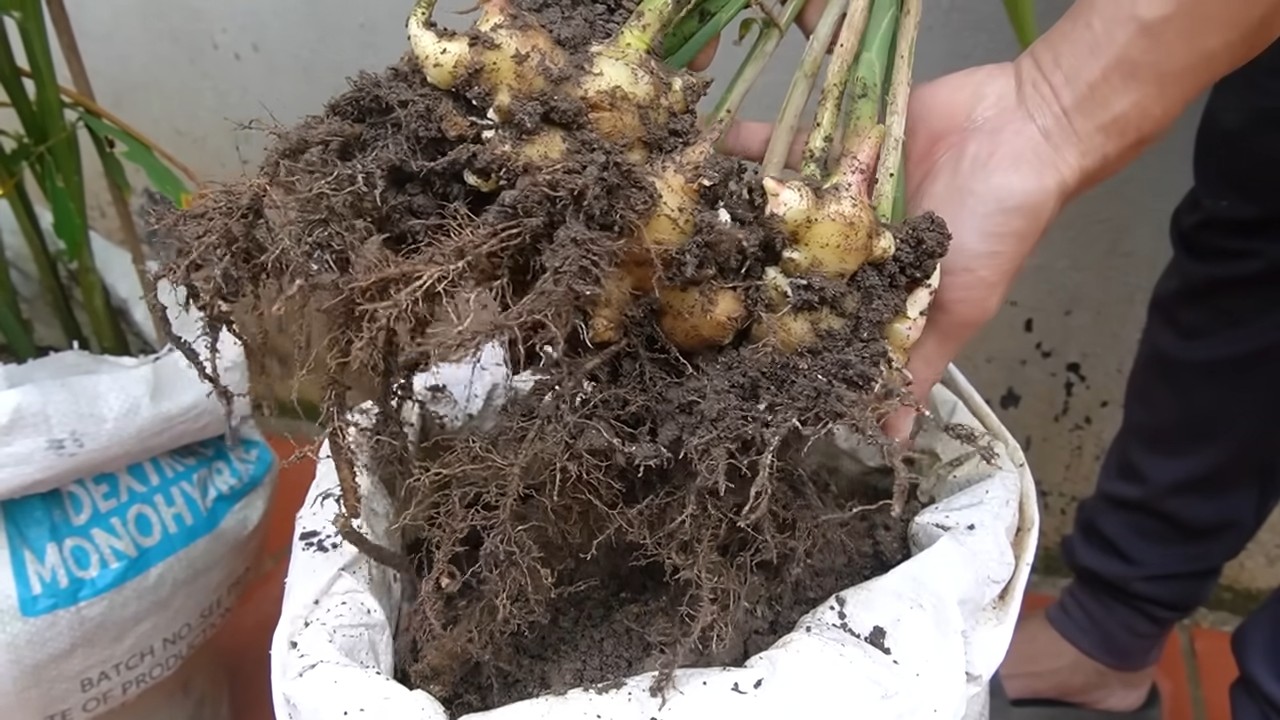
Growing Ginger in Small Pots: A Beginner’s Guide
Hey there, fellow plant enthusiasts! Ever thought about growing your own ginger? It’s surprisingly easy, even if you don’t have a sprawling garden. I’m going to walk you through how to cultivate this flavorful rhizome right in your own home, using small pots. Get ready to have fresh ginger at your fingertips!
What You’ll Need
Before we dive in, let’s gather our supplies. This is what I usually use:
* Ginger Rhizome: Look for a plump, healthy-looking piece of ginger at your local grocery store or farmers market. It should have visible “eyes” (small buds) on it. Organic ginger is often recommended, as it’s less likely to be treated with growth inhibitors.
* Small Pots: Choose pots that are at least 6 inches deep and wide. Good drainage is crucial, so make sure they have drainage holes. I prefer terracotta pots, but plastic ones work just fine too.
* Potting Mix: Use a well-draining potting mix. A mix designed for vegetables or herbs is ideal. You can also amend regular potting mix with perlite or vermiculite to improve drainage.
* Watering Can or Spray Bottle: For gentle watering.
* Spray Bottle (Optional): For misting the ginger.
* Warm Location: Ginger thrives in warm environments.
* Patience: Growing ginger takes time, so be prepared to wait!
Preparing the Ginger Rhizome
This is a crucial step to get your ginger off to a good start.
1. Soaking the Rhizome (Optional but Recommended): I like to soak the ginger rhizome in lukewarm water for 12-24 hours before planting. This helps to rehydrate it and encourage those “eyes” to sprout.
2. Cutting the Rhizome (If Necessary): If your ginger rhizome is large, you can cut it into smaller pieces, ensuring each piece has at least one or two “eyes.” Let the cut ends callous over for a day or two before planting to prevent rot. I usually just plant the whole piece if it fits in my pot.
3. Inspecting for Rot: Before planting, carefully inspect the rhizome for any signs of rot or mold. Discard any pieces that look unhealthy.
Planting the Ginger
Now for the fun part – getting that ginger in the soil!
1. Fill the Pot: Fill your pot with potting mix, leaving about an inch of space at the top.
2. Plant the Rhizome: Place the ginger rhizome horizontally on top of the soil, with the “eyes” facing upwards.
3. Cover with Soil: Gently cover the rhizome with about 1-2 inches of soil.
4. Water Thoroughly: Water the soil thoroughly until water drains out of the drainage holes.
5. Find a Warm Spot: Place the pot in a warm location with indirect sunlight. Ginger doesn’t like direct, harsh sunlight, especially when it’s young. A spot near a window that gets morning sun is perfect.
Caring for Your Ginger Plant
Consistent care is key to a healthy ginger harvest.
1. Watering: Keep the soil consistently moist, but not waterlogged. Water when the top inch of soil feels dry to the touch. Overwatering can lead to root rot, so be careful! I usually check the soil moisture every other day.
2. Humidity: Ginger loves humidity. If you live in a dry climate, you can increase humidity by misting the plant regularly with a spray bottle or placing the pot on a tray filled with pebbles and water. Just make sure the bottom of the pot isn’t sitting directly in the water.
3. Fertilizing: Once the ginger plant starts to grow, you can fertilize it every 2-3 weeks with a balanced liquid fertilizer diluted to half strength. I use an organic fertilizer designed for vegetables.
4. Temperature: Ginger thrives in temperatures between 65°F and 90°F (18°C and 32°C). Protect it from frost and cold drafts.
5. Pest Control: Keep an eye out for pests like aphids or spider mites. If you spot any, treat them with insecticidal soap or neem oil. I prefer to use organic solutions whenever possible.
Harvesting Your Ginger
The best part!
1. When to Harvest: You can start harvesting ginger about 3-4 months after planting. The longer you wait, the more mature and pungent the ginger will be.
2. Harvesting a Little at a Time: If you only need a small amount of ginger, you can carefully dig around the edges of the pot and cut off a piece of the rhizome. Be sure to leave the rest of the plant undisturbed so it can continue to grow.
3. Harvesting the Entire Plant: If you want to harvest the entire plant, gently tip the pot over and remove the ginger rhizomes from the soil.
4. Cleaning and Storing: Wash the harvested ginger rhizomes thoroughly and let them dry. You can store them in the refrigerator for several weeks or freeze them for longer storage. I like to wrap mine in a paper towel and then place it in a plastic bag in the fridge.
Troubleshooting
Sometimes things don’t go exactly as planned. Here are some common issues and how I deal with them:
* No Sprouting: If your ginger isn’t sprouting, make sure it’s getting enough warmth and moisture. You can also try gently scratching the surface of the soil to check if the rhizome is still firm. If it’s mushy, it may have rotted.
* Yellowing Leaves: Yellowing leaves can be a sign of overwatering or underwatering. Check the soil moisture and adjust your watering accordingly. It could also be a sign of nutrient deficiency, so try fertilizing the plant.
* Slow Growth: Slow growth can be caused by insufficient light, warmth, or nutrients. Make sure your ginger plant is getting enough of all three.
* Root Rot: Root rot is a common problem with ginger, especially if the soil is not well-draining. To prevent root rot, use a well-draining potting mix and avoid overwatering. If you suspect root rot, carefully remove the plant from the pot and inspect the roots. If they are brown and mushy, cut off the affected areas and replant the ginger in fresh potting mix.
Tips for Success
Here are a few extra tips I’ve learned along the way:
* Choose the Right Ginger: Look for ginger rhizomes that are plump, firm, and have visible “eyes.” Avoid any that are shriveled, soft, or moldy.
* Use Well-Draining Soil: Ginger needs well-draining soil to prevent root rot. Amend your potting mix with perlite or vermiculite if necessary.
* Provide Consistent Moisture: Keep the soil consistently moist, but not waterlogged.
* Give it Warmth and Humidity: Ginger thrives in warm, humid environments.
* Be Patient: Growing ginger takes time, so don’t get discouraged if you don’t see results immediately.
Enjoy Your Homegrown Ginger!
Growing ginger in small pots is a rewarding experience. Not only do you get to enjoy fresh, flavorful ginger, but you also get the satisfaction of growing your own food. With a little patience and care, you can have a thriving ginger plant right in your own home. Happy gardening!
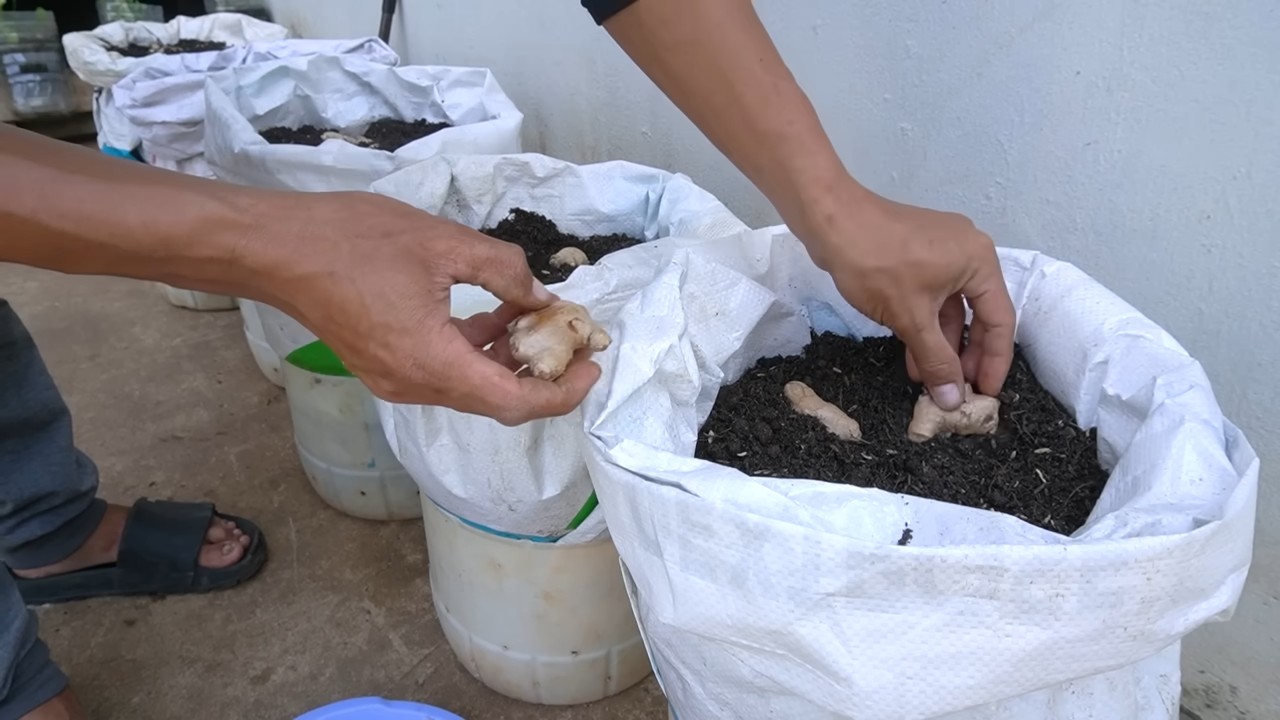
Conclusion
So, there you have it! Growing ginger in small pots is not only achievable, but it’s also a surprisingly rewarding experience. We’ve walked through the simple steps, from selecting the right rhizome to nurturing your plant to its full potential, even in limited spaces. But why should you dedicate a little corner of your home to this fragrant root?
First and foremost, the flavor of homegrown ginger is unparalleled. Forget the bland, fibrous ginger you often find at the grocery store. Homegrown ginger bursts with a vibrant, spicy, and slightly sweet flavor that will elevate your culinary creations to a whole new level. Imagine adding freshly grated ginger to your stir-fries, teas, or even baked goods – the difference is truly remarkable.
Beyond the superior flavor, growing your own ginger offers a sense of accomplishment and connection to nature. Watching a tiny rhizome sprout and flourish into a leafy plant is a deeply satisfying experience. It’s a reminder of the simple joys of gardening and the power of nurturing life. Plus, you’ll always have a fresh supply of ginger readily available whenever you need it.
And let’s not forget the cost savings! While a single ginger rhizome might cost a few dollars, it can yield a substantial harvest over time. By growing your own, you’ll reduce your reliance on store-bought ginger and save money in the long run.
But the benefits don’t stop there. Growing ginger in small pots is also a fantastic way to add a touch of greenery to your home. The lush, tropical foliage of the ginger plant adds a vibrant and refreshing element to any indoor space. It’s a natural air purifier, helping to improve the quality of the air you breathe.
Now, for a few variations to spice things up (pun intended!). Consider experimenting with different varieties of ginger. While common ginger is readily available, you might be able to find other varieties like galangal or turmeric, which can also be grown in pots using similar techniques. Each variety offers a unique flavor profile and potential health benefits.
You can also experiment with different potting mixes. While a well-draining potting mix is essential, you can add amendments like compost or worm castings to boost the nutrient content and promote healthy growth.
Finally, don’t be afraid to get creative with your pot selection. While a standard plastic pot will work just fine, you can also use decorative containers to add a touch of style to your ginger garden. Just make sure the pot has adequate drainage holes to prevent waterlogging.
So, what are you waiting for? Grab a ginger rhizome, a pot, and some potting mix, and embark on your own ginger-growing adventure. We’re confident that you’ll be amazed by the results. And once you’ve harvested your first batch of homegrown ginger, be sure to share your experience with us! We’d love to hear your tips, tricks, and favorite ways to use your freshly grown ginger. Share your photos and stories on social media using #HomegrownGinger or leave a comment below. Let’s inspire others to discover the joy of growing their own ginger! This DIY ginger growing project is a must-try for any home gardener or culinary enthusiast.
Frequently Asked Questions (FAQ)
1. What kind of ginger should I use to grow in a pot?
The best type of ginger to use for growing in a pot is a fresh ginger rhizome from the grocery store or a local farmer’s market. Look for rhizomes that are plump, firm, and have visible “eyes” or growth buds. Avoid rhizomes that are shriveled, soft, or have signs of mold. Organic ginger is often preferred, as it’s less likely to have been treated with growth inhibitors. You can also try different varieties of ginger, such as galangal or turmeric, which can be grown using similar methods.
2. How big of a pot do I need to grow ginger?
A pot that is at least 12 inches in diameter and 12 inches deep is generally recommended for growing ginger. This provides enough space for the rhizome to spread and develop a healthy root system. However, you can start with a smaller pot (around 6-8 inches) and transplant the ginger to a larger pot as it grows. Make sure the pot has adequate drainage holes to prevent waterlogging, which can lead to root rot.
3. What kind of soil is best for growing ginger in pots?
Ginger prefers a well-draining, nutrient-rich soil. A good potting mix for ginger would be a combination of:
* **Potting soil:** Provides a base for the mix.
* **Compost:** Adds nutrients and improves drainage.
* **Perlite or vermiculite:** Enhances drainage and aeration.
You can also add a small amount of slow-release fertilizer to the potting mix to provide a steady supply of nutrients. Avoid using heavy clay soil, as it can retain too much moisture and suffocate the roots.
4. How much sunlight does ginger need?
Ginger thrives in bright, indirect sunlight. Avoid placing your ginger plant in direct sunlight, as it can scorch the leaves. A location near an east-facing or north-facing window is ideal. If you don’t have access to natural light, you can supplement with artificial grow lights.
5. How often should I water my ginger plant?
Water your ginger plant regularly, keeping the soil consistently moist but not waterlogged. Allow the top inch of soil to dry out slightly between waterings. During the growing season (spring and summer), you may need to water more frequently than during the dormant season (fall and winter). Avoid overwatering, as it can lead to root rot.
6. How long does it take for ginger to grow?
It typically takes 8-10 months for ginger to mature and be ready for harvest. You can start harvesting small pieces of ginger after about 4 months, but the flavor will be milder. The best time to harvest is when the leaves start to turn yellow and die back.
7. How do I harvest ginger from a pot?
To harvest ginger, gently dig around the plant and lift the rhizomes out of the soil. You can harvest the entire plant or just take a few pieces of ginger as needed. If you only harvest a portion of the plant, be sure to leave some rhizomes in the pot to continue growing.
8. Can I grow ginger indoors year-round?
Yes, you can grow ginger indoors year-round, provided you provide the right conditions. Ginger needs warm temperatures (around 70-80°F) and high humidity to thrive. You can increase humidity by misting the plant regularly or placing it on a pebble tray filled with water.
9. What are some common problems when growing ginger in pots?
Some common problems when growing ginger in pots include:
* **Root rot:** Caused by overwatering or poor drainage.
* **Leaf spot:** A fungal disease that can cause brown spots on the leaves.
* **Pests:** Aphids, spider mites, and scale can sometimes infest ginger plants.
To prevent these problems, make sure to use well-draining soil, avoid overwatering, and inspect your plants regularly for pests and diseases.
10. Can I use ginger leaves in cooking?
Yes, ginger leaves are edible and have a mild ginger flavor. They can be used in salads, stir-fries, or as a garnish. However, the leaves are not as potent as the rhizome, so you may need to use more of them to achieve the desired flavor.

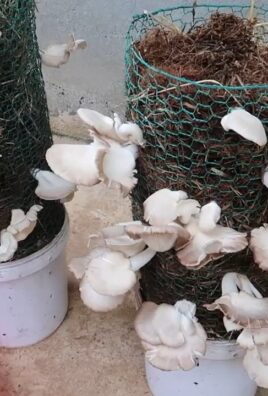
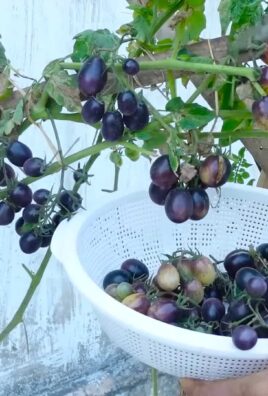
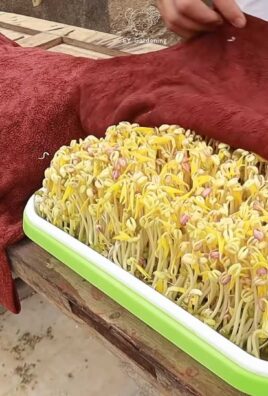
Leave a Comment